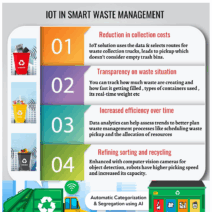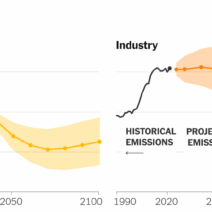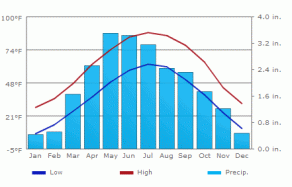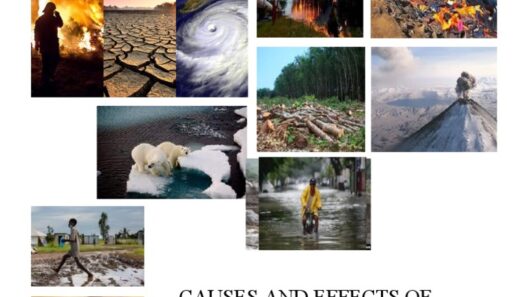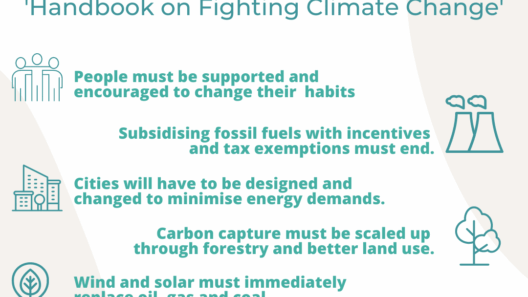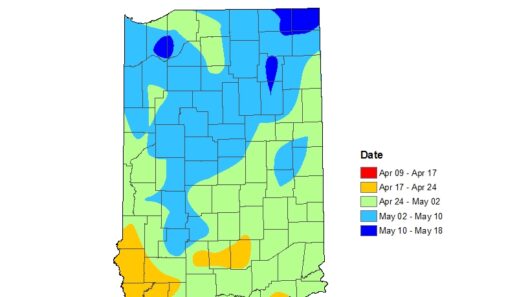The climate in South Dakota is as varied and dynamic as the landscapes themselves, characterized by both the rugged beauty of the Black Hills and the vast expanses of the Great Plains. With such a diverse geography, one might ponder: what exactly does the climate of this Midwestern state entail? This exploration goes beyond mere temperatures and precipitation metrics; it embodies a rich tapestry of environmental influences that impact both local ecosystems and the residents who live there.
In nomenclature, South Dakota can be classified as experiencing a humid continental climate. This designation is critical as it indicates hot summers and cold winters, a notable feature of the region’s weather patterns. As temperatures soar in July, they can reach into the upper 80s and 90s Fahrenheit. Conversely, January often presents a stark contrast, where thermometers can plummet to the single digits. Such extremes not only define the everyday experiences of South Dakotans but also shape the biotic communities that thrive—and often struggle—within this environment.
Precipitation, too, plays a pivotal role in defining South Dakota’s climate. The state witnesses an average annual rainfall of approximately 20 to 30 inches, with the eastern regions typically receiving more moisture than their western counterparts. The Black Hills, for instance, act as a crucial orographic barrier, resulting in increased rainfall on their windward slopes. This phenomenon is integral to maintaining the lush forests of the region while simultaneously contributing to the aridity that characterizes the surrounding plains. During the summer months, thunderstorms can occur, sometimes laden with microbursts and hail. What’s their impact on agriculture, a cornerstone of South Dakota’s economy?
Agriculture in South Dakota grapples with the vicissitudes of climate. The state’s farmers often face a daunting task, needing to adapt their practices to an ever-changing climate. What if those changing patterns brought forth both fatal floods and devastating droughts? The variances in rainfall and temperature can drastically alter growing seasons and crop yields. Corn, soybeans, and wheat are staples here, but farmers are increasingly called to the forefront of climate resilience, experimenting with drought-resistant crop varieties and sustainable farming techniques.
The phenomenon of climate change adds layers of complexity. The climatic shifts observed in South Dakota are not mere statistical anomalies; they reflect broader global trends that may alter the very fabric of local life. Rising temperatures could lead to changes in the types of crops that can be grown or the wildlife that can survive. Moreover, invasive species may gain a foothold, further jeopardizing native flora and fauna. These challenges present a duality: the necessity for adaptation and the opportunity for innovation.
The state’s unique location brings with it a convergence of diverse weather systems. The clashes between warm, moist air from the Gulf of Mexico and cold, arid air from Canada create a melting pot of atmospheric conditions. This is especially noticeable during transitional seasons like spring and fall, where unpredictable weather phenomena arise. One moment the sun may shine brightly, and the next, snowflakes fall—theschizophrenic nature of South Dakota weather is reflected in its nickname: “The Land of Infinite Variety.” Are South Dakotans prepared to meet these atmospheric dynamics head-on?
The impact of wind cannot be overlooked when discussing South Dakota’s climate. Known for its robust winds, particularly in the spring, these gusts can dramatically influence temperatures and contribute to evaporative loss during dry periods. Additionally, wind erosion poses a significant challenge for soil health, impacting agricultural productivity. Farmers must be vigilant stewards of their land, employing strategies such as cover cropping and no-till farming to combat the adversities posed by wind erosion.
Moreover, identifying significant climate patterns in South Dakota requires an appreciation of seasonal variations. The state has four distinct seasons, each with unique characteristics. Spring heralds a rebirth, showcasing budding trees and blooming flowers, yet it also brings the unpredictability of severe thunderstorms. Summer, a period of bustling growth, can experience sweltering temperatures, while fall is often adorned with a vibrant display of foliage before the chill of winter sets in. Winter, with its bitter cold and snow-covered landscapes, invites recreational activities but also requires preparation for those who wish to brave the elements.
As one contemplates the climatic idiosyncrasies of South Dakota, an intriguing challenge arises: how can individuals and communities become proactive stewards of their environment? Engaging in practices that promote sustainability can mitigate some adverse impacts brought forth by climate change. Energy conservation, reforestation efforts, and community-wide education initiatives could empower residents. What strategies could be implemented on both individual and collective levels to foster resilience against climate fluctuations and to encourage healthy ecosystems?
In conclusion, South Dakota’s climate embodies a juxtaposition of challenges and opportunities. The interplay of geography, agriculture, and weather phenomena crafts a narrative of resilience in the face of adversity. The continued effort to adapt to changing conditions, while preserving the integrity of local ecosystems, underscores the importance of proactive engagement. Moving forward, a concerted endeavor to embrace sustainable practices will not only benefit the current inhabitants but also safeguard the ecological heritage of South Dakota for generations to come. What endeavors will you partake in to contribute to this essential cause? The climate—the time is now to act.
